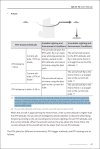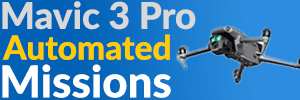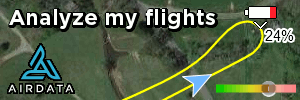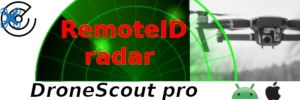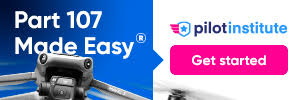Thanks. I misunderstood your first reply to mean I should have been flying at 400 feet. I always stay well below that height and was very concerned when the drone exceeded it doing the RTH. I cancelled the RTH immediately and descended. My RTH is set at 200 feet.Because it's the law.
A mile from the airport isn't that far. I'm a couple miles from the airport and my ceiling is 300 feet IF I get temporary approval to fly here at all.
AutoPylot
app.autopylot.io
Find out if you're restricted below 400'
You are using an out of date browser. It may not display this or other websites correctly.
You should upgrade or use an alternative browser.
You should upgrade or use an alternative browser.
RTH at night
- Thread starter oc1doc
- Start date
Cafguy
Well-Known Member
Welcome to my world. If thats a controlled airport you face some pretty hefty fines the first one being the smallest at 1500. If there are commercial operations at that airport and its controlled and you delay or halt those operations because of your drone, You face a minimum of 75,000 dollars and a little bit of time in the pokey! (up to three years)...You cannot even hover the drone at 2 feet without permission or its a violation. You need to find out what Airport that is and what goes on there. All i'm sayin!If I never flew closer to the airport than 5 miles I would need to drive at least 4 miles every time I flew.
Last edited:
Max height and RTH height aren't the same thing.
In your settings, set your ceiling at 400 feet. If the drone RTH goes over your max height, THEN you have a malfunction.
Saying you stay below 400 feet is fine but the RTH height is a minimum, not a maximum. So the drone sees (erroneously) an obstacle and goes up to avoid it. And it will keep going until it hits max height.
Saying that you'd have to go 4 miles to get away from an airport is a "boohoo" thing. I am about 3-4 miles away and I can't fly at my house (without clearance). It's my BOOHOO thing.
In your settings, set your ceiling at 400 feet. If the drone RTH goes over your max height, THEN you have a malfunction.
Saying you stay below 400 feet is fine but the RTH height is a minimum, not a maximum. So the drone sees (erroneously) an obstacle and goes up to avoid it. And it will keep going until it hits max height.
Saying that you'd have to go 4 miles to get away from an airport is a "boohoo" thing. I am about 3-4 miles away and I can't fly at my house (without clearance). It's my BOOHOO thing.
There's no reason that RTH at night should work any different from the way it does in daylight.RTH at night is a crapshoot IMO.
GPS doesn't stop working when the sun goes down.
All this worry about RTH altitude control malfunction is easily avoided by just flying the drone yourself. Better to be the PIC than a spectator.
If you lose position awareness for the drone, it's dirt simple to follow the rubber band line on the controller map back to the home point.
If you lose position awareness for the drone, it's dirt simple to follow the rubber band line on the controller map back to the home point.
AMann
Well-Known Member
What is your overall maximum height setting for the drone, which @Bad Santa is calling the ceiling height, which, indeed, is different than your RTH height setting?Thanks. I misunderstood your first reply to mean I should have been flying at 400 feet. I always stay well below that height and was very concerned when the drone exceeded it doing the RTH. I cancelled the RTH immediately and descended. My RTH is set at 200 feet.
The default factory setting for maximum height is 400 feet, unless you deliberately manually raised it to a higher elevation (absolute max setting is 500m when within 50km of any airport), requiring acknowledging that doing so might result in violating federal regulations.
@Bad Santa is suggesting that you prevent the problem by setting the maximum drone height to the maximum elevation height allowed for your location, which would be 300 feet or less, instead of the custom maximum height possible of 500m when within 50km of an airport.
Turning OA off will, of course, also prevent the problem, as will manually flying the drone back, instead of using RTH.
Cafguy
Well-Known Member
Except that the obstacle sensors don't work well in the dark and your Drone could lose its orientation, and wont be able to judge its altitude easily...It has a much better chance of ending up in a Crash.There's no reason that RTH at night should work any different from the way it does in daylight.
GPS doesn't stop working when the sun goes down.
- Joined
- Oct 12, 2016
- Messages
- 30,279
- Reactions
- 34,182
- Location
- Harrisburg, PA (US)
- Site
- mavichelp.com
Simple .. your OA sensors can't work in the dark, so there's no need to leave them enabled for flying in the dark.Except that the obstacle sensors don't work well in the dark
Your understanding of how your drone works is rather poor .and your Drone could lose its orientation, and wont be able to judge its altitude easily...
Your drone isn't going to lose its orientation or suffer an inability to judge its height.
How so?It has a much better chance of ending up in a Crash.
If you are flying at night (when OA can't work) where obstacles are in the flight path, that problem would be down to your choice of flight location, not some fault of the drone.
Anything else you need help with?
Last edited:
GPS shows altitude as well as location. It's been that way for well over a decade. Maybe more than 2 decades.Except that the obstacle sensors don't work well in the dark and your Drone could lose its orientation, and wont be able to judge its altitude easily...It has a much better chance of ending up in a Crash.
Your drone doesn't use GPS for height.GPS shows altitude as well as location. It's been that way for well over a decade. Maybe more than 2 decades.
It's barometric sensor is much more accurate.
You'd find that most general aviation aircraft also use a barometric sensor for their altitude measurement, just like your drone.
hank970
Well-Known Member
I've had no problems with RTH on mostly dark twilight flights, but then I've flown after dark only a few times. My assumption is that the drone relies on GPS for the bulk of the return, then on the optical sensors on the bottom of the craft as the craft nears the home point. The landing light comes on to illuminate the landing pad (a 3-foot Hoodman) when the craft is 15 feet or so off the ground, and I've noted that the craft often makes a number of corrections in pitch and roll in those last few feet of the final descent. My RTH altitude is set at 120 feet AGL to safely clear all known local obstacles. Obviously, an obstacle-avoidance feature reliant on optical sensors would be relatively ineffective in the dark but, since I set the RTH altitude specifically to avoid known local obstacles, I can't imagine that the sensors' lack of vision would cause the drone to hesitate in a GPS-controlled return flight.
I've had the similar issue with a night flight:
Air 3S RTH is set at 50m. Yet, aircraft would climbs to 500m if I did not stop it.
All firmware undated.
Here's what DJI responded:
Due to the ambient light being too strong or too weak, the aircraft mistakenly thinks there is an obstacle ahead, triggering the return to avoid the obstacle and increasing the altitude. When you fly at night, the ambient light is very weak, causing the aircraft to mistakenly think there is an obstacle and continue to rise. If you confirm that there are no obstacles on the return path, you can try to turn off the obstacle avoidance function and try again.
Ouch, never mind. Gotta read the rests of the dozen posts before reply to the one from yesterday......
May I suggest you refresh your knowledge of the drone laws by retaking the TRUST and focusing on the areas including controlled airspace authorization, maximum altitude above ground level, and flying at night. Everyone can use more knowledge about the complex FAA rules and regulations when it comes to drone and it's pretty common to go back and make sure you are up to date. Are you near LIH?Yes I'm aware of max altitude. The drone did it itself while trying to RTH. I stay below the 400 foot limit. If I never flew closer to the airport than 5 miles I would need to drive at least 4 miles every time I flew. I fly very cautiously at low altitude and DJI Fly reminds me I am in a controlled area but allows me to take off. Haven't had any problems.
DarR-T
Well-Known Member
Following my night photo shoot, I casually RTH as I normally do, not thinking anything of it until I noticed the altitude was north of 250m and climbing. "What the heck!!!". I cancelled the RTH, dropped the altitude and flew-in manually.Wow! A known defect! DJI lets the aircraft to elevate to the maximum of 500m which is 1240 feet above the legal 400 foot limit, instead of complying with your customized RTH settings!
I then wrote about it in the DJI forum and their response was as per in my previous post where DJI suggests turning-off the obstacle avoidance function in pitch black situations.
I have yet to test this but if they're correct, the RTH would return using the GPS flight path.
Last edited:
Still a bit confusing, as they do not clearly explain which altitude limit they are referring to. However, it would appear to be the separate maximum altitude setting (that @Bad Santa is referring to as the ceiling height) rather than the RTH altitude setting. It will ascend above the RTH height as necessary, but never exceed the preset maximum height ceiling. Setting the maximum ceiling height to the FAA limit in the area of flight would therefore be prudent, while setting an appropriate RTH height below that ceiling.@oc1doc it looks like your drone was trying to avoid an obstacle, as described in the Air 3S manual below. But if you share the TXT flight log, all of the needed data should be there to confirm what it was doing.
View attachment 186134
"If the forward-facing LiDAR detects an obstacle ahead, the aircraft will ascend to avoid the obstacle. It will stop climbing once the path ahead is clear and then continue to RTH. If the obstacle height exceeds the altitude limit, the aircraft will brake and hover, and the user will need to take control."
So, what is your maximum ceiling height altitude set to, independent of your RTH altitude setting?Following my night photo shoot, I casually RTH as I normally do, not thinking anything of it until I noticed the altitude was north of 250m and climbing. "What the heck!!!". I cancelled the RTH, dropped the altitude and flew-in manually.
I then wrote about it in the DJI forum and their response was as per in my previous post where DJI suggests turning-off the obstacle avoidance function in pitch black situations.
I have yet to test this but if they're correct, the RTH would return using the GPS flight path.
Default is 400 feet, but it can be manually set to 500m, after acknowledging that doing so may result in violating FAA's 400 foot AGL rule.
DarR-T
Well-Known Member
Exceeding 120m during my previous night flight was due to relying on the RTH 50m max altitude security settings and a momentary bout of inattention. Notwithstanding the RTH setting, I don't set a maximum altitude ceiling in the settings as I fly in mountainous terrain but I do respect the 120m AGL rule. Going forward however, I will set a hard ceiling for night flights as a precautionary measure.So, what is your maximum ceiling height altitude set to, independent of your RTH altitude setting?
Default is 400 feet, but it can be manually set to 500m, after acknowledging that doing so may result in violating FAA's 400 foot AGL rule.
Last edited:
Similar threads
- Replies
- 7
- Views
- 403
- Replies
- 8
- Views
- 1K
- Replies
- 2
- Views
- 994
DJI Drone Deals
New Threads
-
2 Pro Flying Google's Views - Fall 2025
- Started by RadioFlyerMan
- Replies: 1
-
-
Air 3 The Forth bridges peeking through the mist
- Started by Coconut Island Drones
- Replies: 9
-
2 Pro Friday Night Lights Field Odessa Texas Ratliff Stadium
- Started by fuzzball
- Replies: 1
-



